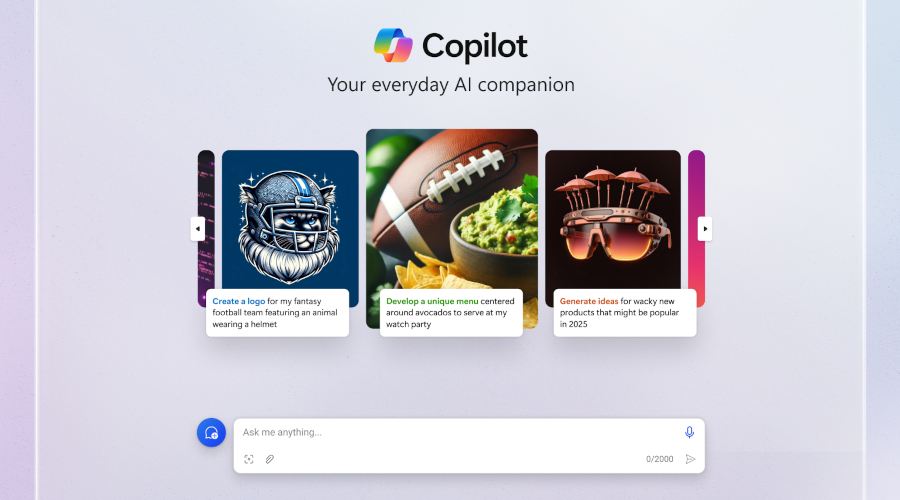 AI
AI
 AI
AI
 AI
AI
Microsoft Corp. today launched a new version of its Copilot artificial intelligence chatbot that will make it easier for users to create and edit images.
Copilot rolled out exactly a year ago under the name Bing Chat. Yusuf Mehdi, chief marketing officer of Microsoft’s consumer business, detailed in a blog post that users have since launched more than 5 billion chat sessions. They also generated more than 5 million images using the built-in graphic design features.
Copilot provides the ability to generate images with natural language prompts. The chatbot can draw in multiple styles, as well as provide several variations of the media content it outputs. Until today, however, Copilot didn’t provide a convenient way of editing the initial version of an image created by a user.
It’s now possible to edit a newly created image by entering a series of followup prompts. A user could, for example, instruct Copilot to blur the background or increase the brightness of a certain object. The chatbot can carry out more sweeping edits as well, including changes to the style in which an image is drawn.
Microsoft customers subscribed to the paid Pro version of Copilot will also receive access to a resizing tool. According to the company, Copilot Pro can switch an image from landscape mode to a square format or vice versa. The tool complements an existing feature that allows subscribers to speed up the pace at which the chatbot generates images.
The new graphic design capabilities debuted alongside an enhancement to Copilot’s “Balanced” mode. It’s one of three options that users can choose from when customizing the style in which the chatbot generates answers. It strikes a middle ground between the two other modes, which Microsoft refers to as “Creative” and “Precise.”
Jordi Ribas, head of engineering for Copilot and Bing, wrote today in an X post spotted by VentureBeat that Balanced mode is now powered by an AI model called Deucalion. Microsoft hasn’t shared technical information about the new model. However, Ribas did disclose that the Deucalion will enable Copilot to generate “richer and faster” responses.
The enhanced text and image generation features are rolling out alongside an interface redesign. Previously, when users started a new Copilot session, the interface displayed three snippets of text explaining a few of the tasks the chatbot can perform. Microsoft has replaced those panels with a set of images and accompanying captions that highlight example use cases in a more streamlined format.
In an interview with The Verge on occasion of the update, Mehdi said that Microsoft plans to further extend Copilot’s capabilities down the road. He detailed that “there are a lot of extensions that are coming to Copilot, whether those are GPTs or plug-ins.”
OpenAI, which developed the large language models that underpin Copilot, likewise offers plugins for its ChatGPT assistant. They enable the service to access data stored in third-party applications. Some plugins also allow ChatGPT to perform actions in those applications on behalf of users.
Support our open free content by sharing and engaging with our content and community.
Where Technology Leaders Connect, Share Intelligence & Create Opportunities
SiliconANGLE Media is a recognized leader in digital media innovation serving innovative audiences and brands, bringing together cutting-edge technology, influential content, strategic insights and real-time audience engagement. As the parent company of SiliconANGLE, theCUBE Network, theCUBE Research, CUBE365, theCUBE AI and theCUBE SuperStudios — such as those established in Silicon Valley and the New York Stock Exchange (NYSE) — SiliconANGLE Media operates at the intersection of media, technology, and AI. .
Founded by tech visionaries John Furrier and Dave Vellante, SiliconANGLE Media has built a powerful ecosystem of industry-leading digital media brands, with a reach of 15+ million elite tech professionals. The company’s new, proprietary theCUBE AI Video cloud is breaking ground in audience interaction, leveraging theCUBEai.com neural network to help technology companies make data-driven decisions and stay at the forefront of industry conversations.